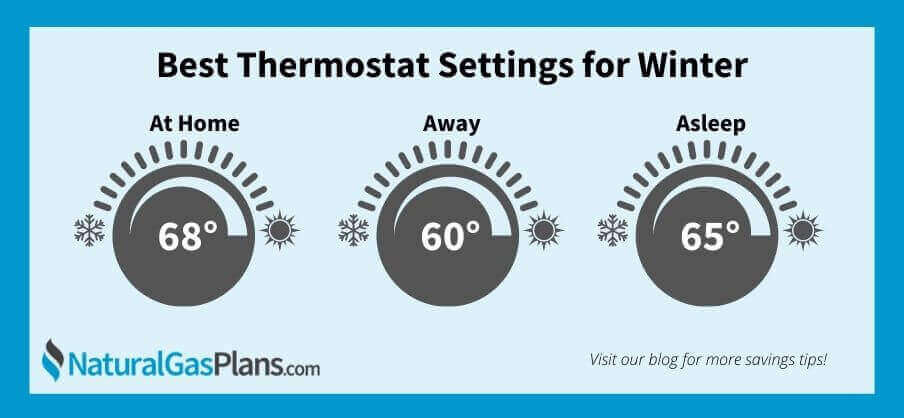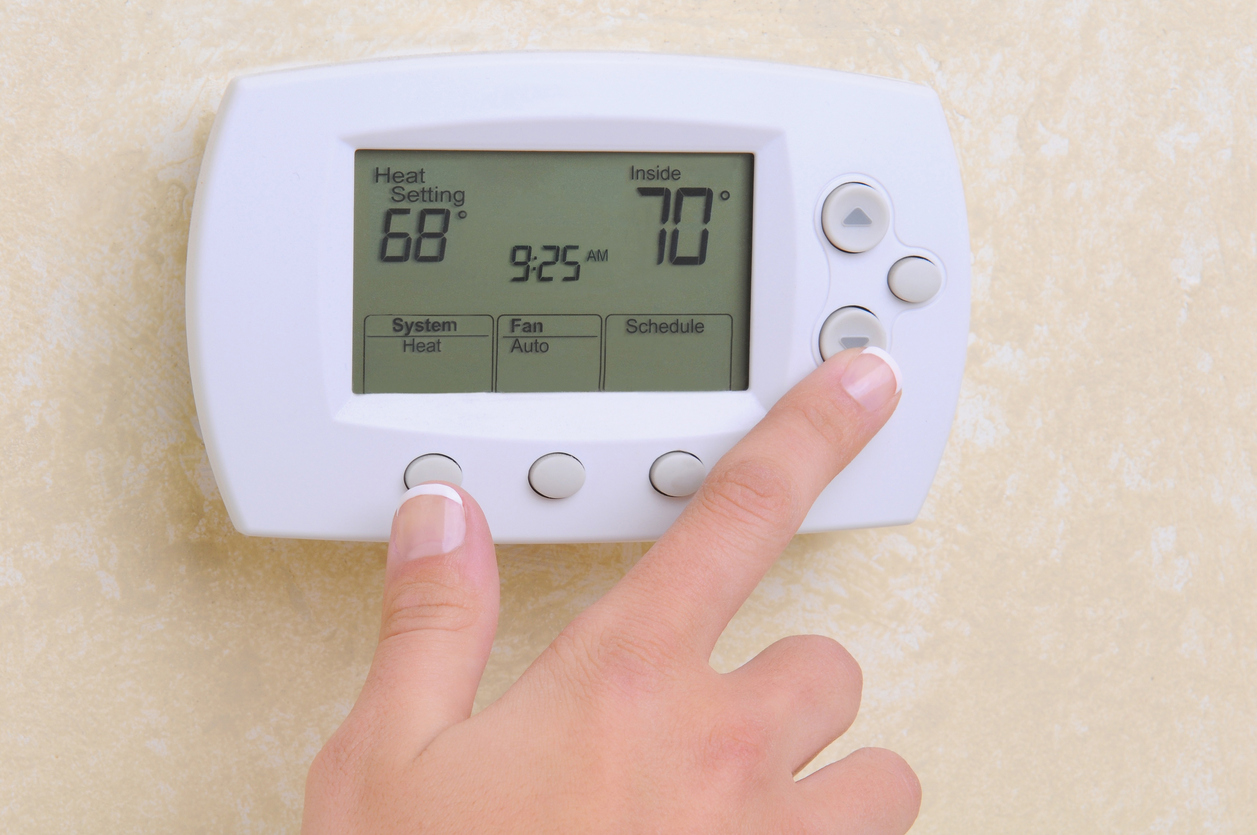What Should You Set Thermostat In Winter

Winter's chill brings the inevitable question: what should you set your thermostat to for optimal comfort and energy savings? The answer isn't always straightforward and depends on a variety of factors, including your personal preferences, building characteristics, and the type of heating system you have. This article will delve into the intricacies of thermostat settings during the winter months, offering guidance for homeowners, HVAC technicians, and facility managers alike.
Understanding Thermostat Basics
Before diving into specific temperature recommendations, it's crucial to understand the fundamentals of how thermostats work. A thermostat is essentially a control device that senses the temperature of its environment and maintains it near a desired set point. Older thermostats used bimetallic strips to physically react to temperature changes, while modern thermostats are often digital and programmable.
Programmable thermostats offer significant advantages in terms of energy efficiency. They allow you to schedule different temperatures for different times of the day, such as lowering the temperature while you're at work or asleep. Some advanced models even learn your habits and automatically adjust the temperature accordingly.
Smart thermostats take programmability to the next level. These thermostats connect to your home's Wi-Fi network and can be controlled remotely via a smartphone app. They often include features like geofencing, which automatically adjusts the temperature when you leave or approach your home, and energy usage reports that provide insights into your heating patterns.
Recommended Winter Thermostat Settings
The U.S. Department of Energy recommends setting your thermostat to 68°F (20°C) when you're home and awake. Lowering the temperature by 7-10 degrees for eight hours a day can save you as much as 10% on your heating bill. This can be achieved by setting your thermostat to around 60-62°F (15.5-16.5°C) while you're asleep or away from home.
However, these are just general recommendations. The ideal thermostat setting for you will depend on your individual comfort level and tolerance for temperature variations. Some people prefer a warmer home, while others are comfortable with slightly cooler temperatures. It's important to experiment to find a setting that works best for you and your family.
Factors Influencing Thermostat Settings
Several factors can influence the optimal thermostat setting for your home:
- Insulation: Well-insulated homes retain heat more effectively, allowing you to set the thermostat lower without sacrificing comfort. Poorly insulated homes, on the other hand, may require higher thermostat settings to maintain a comfortable temperature.
- Window Efficiency: Similar to insulation, energy-efficient windows help to reduce heat loss. Single-pane windows are notorious for their poor insulation properties, while double-pane or triple-pane windows with low-E coatings provide significantly better insulation.
- Air Leaks: Drafts and air leaks can negate the benefits of even the most efficient heating system. Sealing air leaks around windows, doors, and other openings can significantly improve your home's energy efficiency and allow you to lower your thermostat setting.
- Personal Preferences: As mentioned earlier, individual comfort levels vary. Some people are more sensitive to cold than others.
- Age and Health: Elderly individuals and people with certain medical conditions may require warmer temperatures for comfort and health reasons.
Heating System Types and Their Impact
The type of heating system you have can also impact your thermostat settings. Different heating systems have different efficiency ratings and operating characteristics.
- Forced-Air Furnaces: These are the most common type of heating system in the United States. They use a furnace to heat air, which is then distributed throughout the home via ductwork. Forced-air furnaces can be powered by natural gas, propane, oil, or electricity. The efficiency of a forced-air furnace is measured by its Annual Fuel Utilization Efficiency (AFUE) rating. Higher AFUE ratings indicate greater efficiency.
- Heat Pumps: Heat pumps transfer heat from one place to another. In the winter, they extract heat from the outside air and transfer it inside. Heat pumps are generally more energy-efficient than electric resistance heating, but their efficiency decreases as the outside temperature drops. There are two main types of heat pumps: air-source heat pumps and geothermal heat pumps. Air-source heat pumps are more common, while geothermal heat pumps are more expensive but also more efficient.
- Boilers: Boilers heat water, which is then circulated through radiators or baseboard heaters to warm the home. Boilers can be powered by natural gas, propane, oil, or electricity. Their efficiency is also measured by AFUE.
- Electric Resistance Heating: This includes electric baseboard heaters, space heaters, and electric furnaces. Electric resistance heating is the least energy-efficient type of heating system. It's typically used as a supplemental heat source or in homes that don't have access to natural gas.
If you have a heat pump, you may notice that it struggles to maintain a consistent temperature when the outside temperature drops below freezing. In these situations, the heat pump may switch to auxiliary heat, which is typically electric resistance heating. Auxiliary heat is much less efficient than the heat pump itself, so it's important to minimize its use. Setting your thermostat to a lower temperature can help to prevent the heat pump from switching to auxiliary heat unnecessarily. Technicians often use a "balance point" analysis to determine when supplemental heat kicks in to optimize a heat pump's output and cost.
Cost Considerations
Lowering your thermostat setting can save you money on your heating bill. As mentioned earlier, the U.S. Department of Energy estimates that you can save as much as 10% per year by lowering your thermostat by 7-10 degrees for eight hours a day. The exact amount of savings will depend on your climate, the efficiency of your heating system, and your home's insulation levels.
Consider installing a programmable or smart thermostat to automate temperature adjustments and maximize energy savings. While programmable thermostats have a relatively low upfront cost, smart thermostats can offer more advanced features and greater control over your heating system.
Beyond the thermostat itself, consider other energy-saving measures, such as improving insulation, sealing air leaks, and upgrading to energy-efficient windows. These investments can significantly reduce your heating costs and improve your home's overall comfort.
Considerations for Facility Managers
Facility managers responsible for maintaining large buildings face unique challenges when it comes to thermostat settings. They need to balance the comfort of building occupants with the need to control energy costs.
In commercial buildings, it's common to use zoned heating systems, which allow for independent temperature control in different areas of the building. This can help to reduce energy waste by only heating areas that are occupied. Facility managers can also use occupancy sensors to automatically adjust the temperature in unoccupied areas.
Regular maintenance of HVAC systems is crucial for ensuring optimal performance and energy efficiency. This includes cleaning or replacing air filters, inspecting ductwork for leaks, and calibrating thermostats. Properly maintained HVAC systems will operate more efficiently and last longer.
HVAC Technician Tips
For HVAC technicians, advising clients on thermostat settings is an important part of the job. Here are some tips to keep in mind:
- Assess the Home: Before making any recommendations, assess the home's insulation levels, window efficiency, and air leakage.
- Understand the Heating System: Determine the type of heating system and its efficiency rating.
- Consider the Client's Needs: Ask the client about their comfort preferences, lifestyle, and budget.
- Explain the Benefits of Programmable Thermostats: Emphasize the energy savings and convenience of programmable thermostats.
- Educate on Proper Usage: Explain how to program the thermostat correctly and the importance of avoiding excessive temperature swings.
- Offer Additional Recommendations: Suggest other energy-saving measures, such as improving insulation and sealing air leaks.
By providing informed advice and guidance, HVAC technicians can help their clients save money on their heating bills and improve the comfort of their homes.
Conclusion
Choosing the right thermostat setting for winter requires a holistic approach, considering factors ranging from personal comfort to the technical specifications of your heating system. By understanding the principles outlined in this article, homeowners, HVAC technicians, and facility managers can make informed decisions that optimize both comfort and energy efficiency. Remember to regularly evaluate your heating system's performance and adjust your thermostat settings as needed to achieve the best possible results. Consulting with a qualified HVAC professional can provide personalized recommendations tailored to your specific needs and circumstances.









